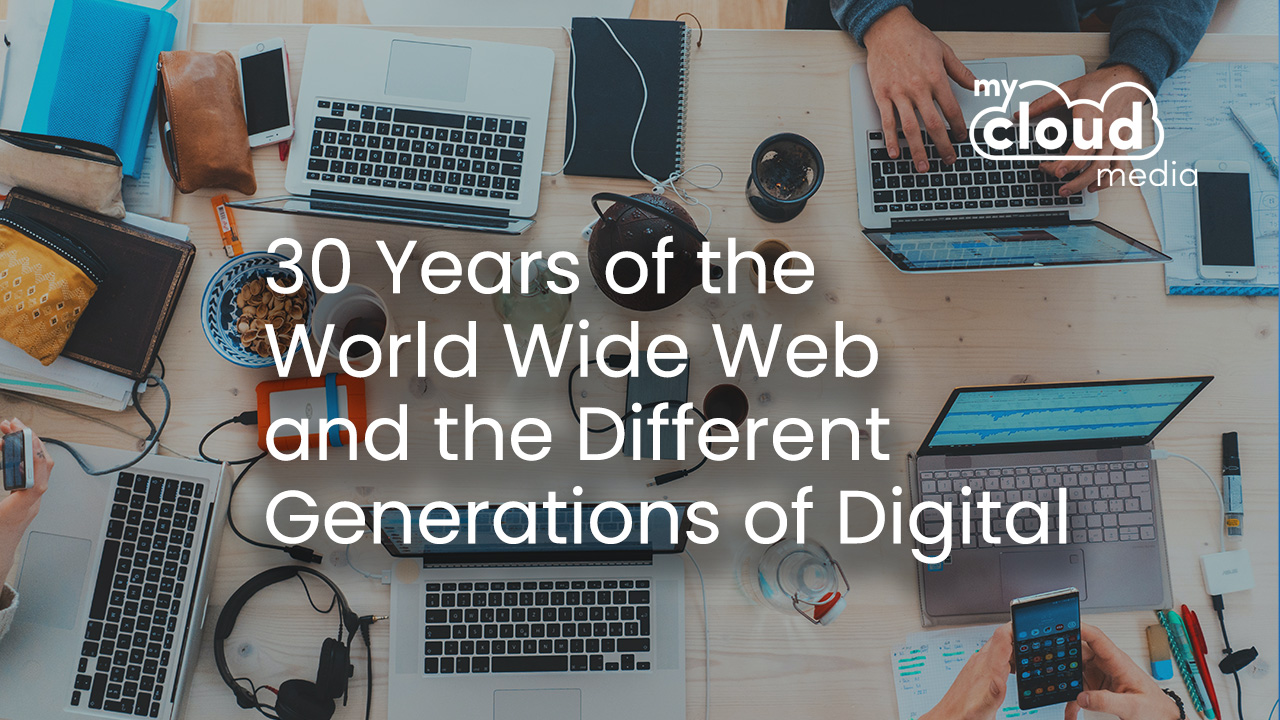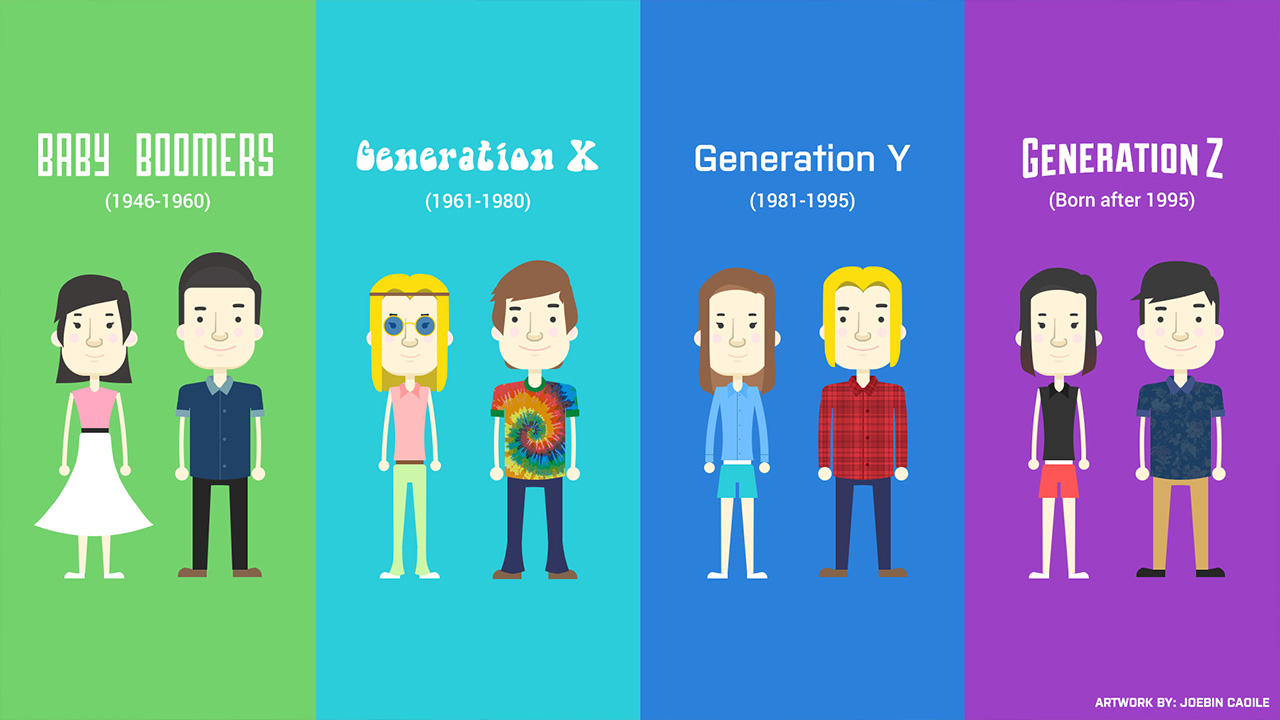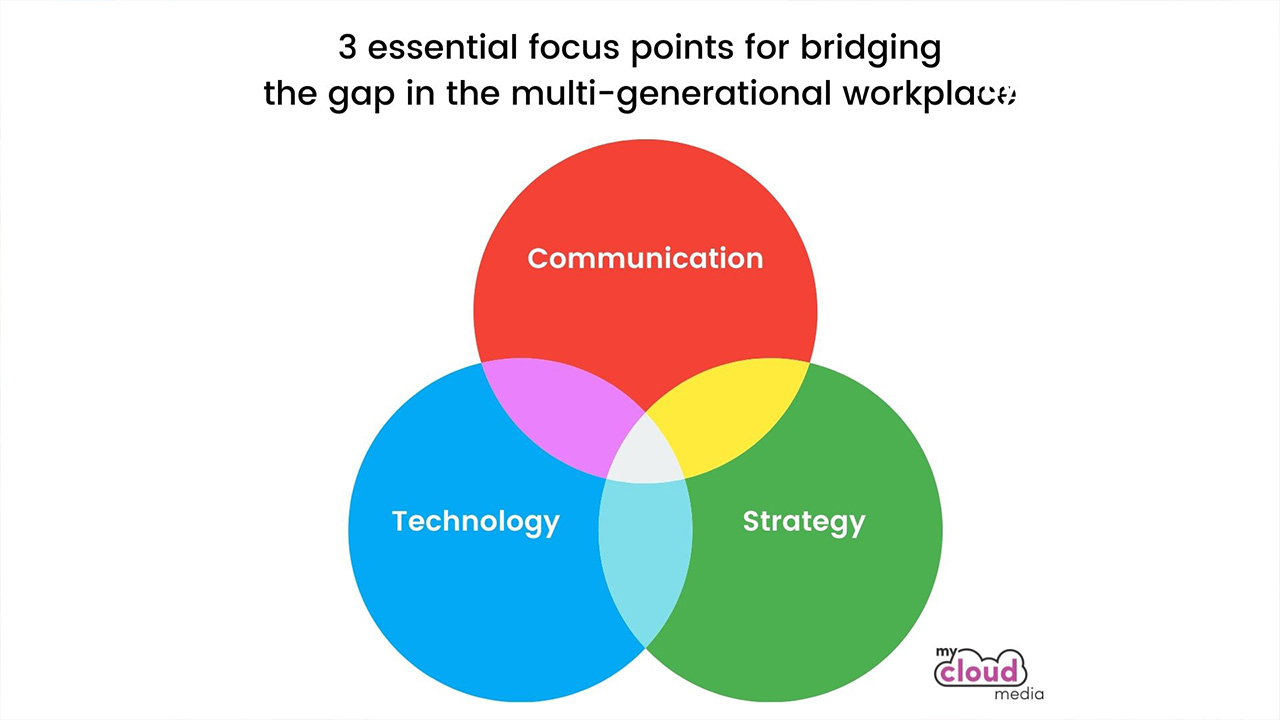Want to see how myCloud Media can help your business?
Thank you for contacting us.
We will reply to you in the next 24-48 hours.

Yes, believe it or not, the web is 30. Plans were initially drawn up by CERN scientist Tim Berners-Lee as early as 1989. However, it was August 1991 when he publicly announced his automated information-sharing system, known as the World Wide Web (or WWW for short). This would allow CERN to effortlessly communicate and transfer data to scientists and researchers working all around the world.
CERN even held a huge birthday celebration, WEB@30, in 2019. But now that the partying is over, we need to be asking one pretty major question: what does the web at 30 really mean for us?
Firstly, the web turning 30 means it's rapidly approaching middle age! But for businesses, there’s something more pressing to consider.
A 30-year old web means the internet has been available to us for so long that we’ve now got four distinct generations of employees using the internet in the workplace:
… and let’s not forget that it’s only 8 years until Generation Alpha starts applying for jobs, too.

One of the good things about this is that businesses have the biggest and most diverse candidate pool available to them of all time.
The downside? The combination of these generations, all trying to work together towards a common, shared goal, brings with it its own range of issues, which can be quite a challenge.
On the one hand, what we have here are pools of long-term, well-established Baby Boomers and older Millennials who have become incredibly skilled at using certain technologies, and are very familiar with organisational culture. Yet they may be somewhat reluctant to change, adapt, and try out new things.
On the other hand, we have these Gen Z-ers who have grown up as digital natives. They may lack the experience of their older counterparts and specific system expertise. But they’re quick to learn, quick to adapt, and perhaps most importantly, they’re forward-thinking innovators, and keen to progress.
No matter how you look at it, there are differences in how these different generations view technology. To some, specific technologies are a part of everyday life.
To others, technology IS life. And one big mistake that organisations can make today is to pretend that these differences don’t exist at work.
I’m not going to waste your time talking about the importance of equality. We all know that. But what I will say is that I think it’s possible to extend equality just a little too far.
Should you ensure you’re giving everyone equal opportunities, regardless of age?
Absolutely. Should you overlook age-related differences in experience in the name of treating everyone equally? That doesn’t seem as logical.
We need to be acknowledging that Gen X is different from Gen Y. That Gen Y is different from Gen Z. And that Generation Alpha will once again spark major changes across the landscape. We need to admit that these differences exist, and take the right measures to bridge the generational gap and drive success.
What we all need to be thinking about today is how we can get everyone working together. How can we align the skills of all three generations to bring direct value to business operations? From where I’m sitting, I think there are three essential focus points that will help us all in our mission to achieve just that:
Of course, there are always going to be ‘crossovers’ between the generations. But it’s often said that it’s difficult for older generations to understand younger generations, and vice versa.
So I think we need to start with improving communications between employees to aid understanding. I think tacit knowledge plays a really big role here.
It’s the idea that people learn not through being told, but by being shown. It’s a great way of helping to encourage knowledge transfer across the different generations in your office.
Technology can be key to bridging the generational gap, as long as it’s tech that enables, rather than divides.
Automated technologies – like marketing automation software – are prime examples of technology that enables generational bridging.
They take over some of the more mundane and predictable tasks to help non-digital natives drive themselves forward.
This gives them time to learn new skills, innovate alongside their Gen Z counterparts, and see the value in embracing transformational change.
The final part of the trifecta is strategies.
I think now is the time we should all be looking to develop strategies that work for everyone; that allow for internal processes to be standardised to produce more consistent, more predictable outcomes.
Strategic support services from digital partners can help you develop the most efficient and effective strategies across all critical areas of operations – from search engine optimisation and pay-per-click marketing, to customer relationship management and security.

When different generations understand each other, work together, and get themselves on the same page, we can use age diversity to our advantage. Especially when it comes to marketing.
Think about storytelling. I’m a huge advocate of storytelling in marketing. But I also think we’re quickly entering a time of storytelling deja vu.
And it’s getting worse as more and more businesses begin to understand the power of building audience personas. When we build personas, we’re better able to target the right people. But so are our competitors.
Different businesses are increasingly targeting the same people, and telling the same stories. It’s getting tiring, and audiences are getting bored.
Right now, it’s important to focus on digital storytelling that generates the right personal experience for both B2C and B2B customers.
Basically, we need to get more creative in our storytelling, not only to differentiate ourselves from the competition, but also to resonate with audiences on a deeper level.
This becomes easier when we leverage the power of a multi-generational workforce working together.
Every generation of customers has its own behaviours, preferred platforms, expectations, values, and content consumption habits. So creating content with diverse input can help us connect better.
Now, if you’re a business that’s trying to attract an older market, you’re probably losing interest. But listen up.
One thing I’ve noticed happening a lot with businesses with an older client base, especially in the B2B environment, is that they’re too focused on creating connections with the Gen X leaders.
That’s important, sure. But we also need to ensure we’re creating content for the Gen Y and Gen Z influencers; those that can influence higher-end decision making, and will eventually be the leaders of the future.
By bridging the generational gap, today’s companies can build digital marketing and content strategies based on a healthy mix. That mix includes the industry experience from Generation X and Y, and the ambitious innovation that comes with hiring younger Generation Z workers, helping to drive better results for the business.
Thank you for contacting us.
We will reply to you in the next 24-48 hours.
Discover Your Online Success Score
We have teamed up with ScoreApp to launch our new ONLINE SUCCESS scorecard. Designed to let you understand the key metrics to PROMOTE lead generation and sales growth for your business.
How to be an Effective Digital Content Creator with the Help of AI Tools
We all want to be effective digital content creators, don’t we? AI tools might just be the answer, but we still need a people-centric approach when developing our content marketing strategies.
POSITIONING Your Brand, Products Or Services To Solve Customers' Problems
No matter what industry you operate in, building influence and driving revenue always begins in the same way: by positioning your organisation or brand as a solution to your audience’s problem.
How do you REACH out and build relationships with new customers?
We say "people buy from people". But we specifically buy from people and companies we know, like and trust. Building familiarity with the right potential customers takes time, however, you can use a few key tried and tested digital strategies to reach your audience in quick and measurable ways.
Why The Right OFFERS Nurture The Right Marketing and Sales Leads
‘If you build it, they will come.’ That’s how the old saying goes. But in the land of lead generation and growth marketing, it doesn’t quite ring true, does it?
To MOTIVATE your Audience, the Cogs in the Sales Process Must Always be Turning
Optimising your digital efforts to attract and engage audiences is a great way to get them where they need to be: your website.
OPTIMISE for Success... Know What your Customer Wants and Understand What Works
Understanding the buyer journey is key to creating great campaigns that your prospective customers should – in theory – love.
How to TARGET your Ideal Customers for Retention and Repeat Sales
Marketing? Check. Conversion? Check. Sales? Check.
At this point in the game – when a customer commits and purchases a product or service – many organisations pat themselves on the back for a job well done.